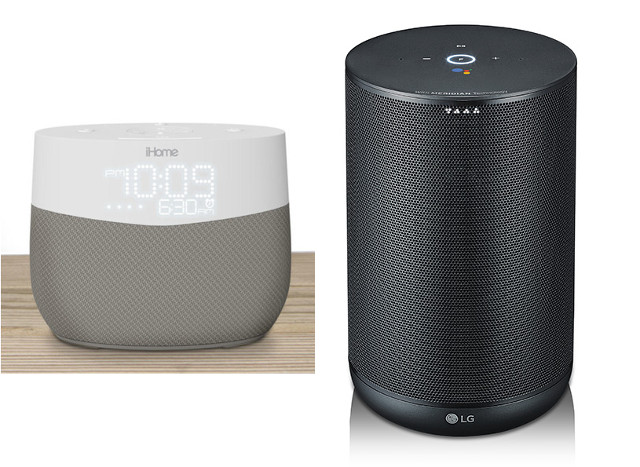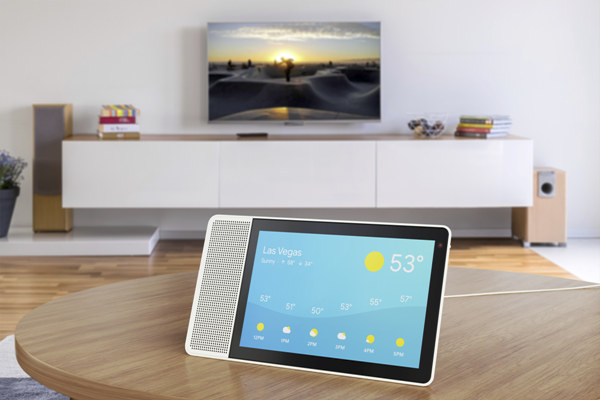Android Things was first introduced as Brillo in October 2015, before being renamed to Android Things the following year when a developer preview was released with support for Raspberry Pi 3, as well as Intel and NXP development boards.
But if you can’t remember the last time you’ve purchased a device running Android Things that’s normal, because so far, there was none. Google announced this is going to change as the first set of Android Things products have been announced at CES 2018.

The first category of devices to run Android Things will be Google Assistant enabled smart speakers with the launch of products such as iHome iGV1 and LG ThinQ WK7. ODM partners have also created full speaker reference designs based on certified Android Things and Cast System-on-Modules (SoMs) powered by Rockchip RK3229, Mediatek MT8516, or based on Qualcomm SD212 Home Hub Platform. NXP i.MX 8M solutions are also expected later this year.
Android Things will also find its way into smart displays – also supporting Google Assistant – later this year in products from JBL, Lenovo and LCD based on Qualcomm Snapdragon 624 Home Hub Platform, as well as Sony, which instead will rely on a Mediatek MT8173 system-on-module.

Beside smart speakers and displays, Android Things is now used in prototypes based on NXP processor, and we should soon find Android Things powered 3D printers, robots, and other machines.

Jean-Luc started CNX Software in 2010 as a part-time endeavor, before quitting his job as a software engineering manager, and starting to write daily news, and reviews full time later in 2011.
Support CNX Software! Donate via cryptocurrencies, become a Patron on Patreon, or purchase goods on Amazon or Aliexpress. We also use affiliate links in articles to earn commissions if you make a purchase after clicking on those links.




Am i the only one to find these things creepy? Google already know enough about me, I dont want them listening to me at home via a smart speaker thing.
Or Amazon. Or Apple.
Seriously guys, 1984 was a warning, not an instruction manual.
Smart speakers don’t listen to you and send every word up to Google. That is a misconception in how they work.
Instead there is a little dedicated microcontroller in the speaker that is always listening and doing one thing — scanning what it hears for the hotword. If it doesn’t detect the hotword it just throws away the data from the mic. No one is recording anything at this point.
Once the little processor detects the hotword it starts recording until there is a gap of silence. That’s the data that gets sent up to Google for processing.
….”at this point”, is the key takeaway.
@Jon Smirl
sssh don’t write anything that makes sense. You’ll put my tin foil hat factory out of business.